* 1 Etymology
* 2 History
* 3 Government and politics
o 3.1 Administrative units
* 4 Military
* 5 Geography and climate
* 6 Flora and fauna
* 7 Economy
* 8 Demographics
* 9 Education
* 10 Culture
* 11 Tourism
* 12 Sports
* 13 Transport
* 14 See also
* 15 References
* 16 Further reading
* 17 External linksEtymology
The name Pakistan means Land of (the) Pure in Urdu and Persian. It was coined in 1934 as Pakstan by Choudhary Rahmat Ali, a Pakistan movement activist, who published it in his pamphlet Now or Never The name is a portmanteau representing the "thirty million Muslim brethren who live in PAKSTANby which we mean the five Northern units of India viz: Punjab, North-West Frontier Province (Afghan Province), Kashmir, Sind, and BaluchisTAN" The letter 'i' was later added to ease pronunciation.HistorMain articles: History of Pakistan and History of South AsiaA carved stone statue of a bearded man with a prominent nose wearing a garment with a patternThe Indus Priest/King wearing a Sindhi Ajruk, ca. 2500 BC.The Indus region, which covers a considerable amount of Pakistan, was the site of several ancient cultures including the Neolithic era's Mehrgarh and the bronze era Indus Valley Civilisation (2500–1500 BCE) at Harappa and Mohenjo-DaroWaves of conquerors and migrants from the west—including Harappan, Indo-Aryans, Persians, Greeks, Sakas, Parthians, Kushans, Hephthalites, Afghans, Arabs, Turks and Mughals—settled in the region throughout the centuries, influencing the locals and being absorbed among them Ancient empires of the east—such as the Nandas, Mauryas, Sungas, Guptas and the Palas—ruled these territories at different times from Patliputra
However, in the medieval period, while the eastern provinces of Punjab and Sindh grew aligned with Indo-Islamic civilisation, the western areas became culturally allied with the Iranian civilisation of Afghanistan and Iran The region served as a crossroads of historic trade routes, including the Silk Road, and as a maritime entreport for the coastal trade between Mesopotamia and beyond up to Rome in the west and Malabar and beyond up to China in the eastModern day Pakistan was at the heart of the Indus Valley Civilisation; that collapsed in the middle of the 2nd millennium BCE and was followed by the Vedic Civilisation, which also extended over much of the Indo-Gangetic plains. Successive ancient empires and kingdoms ruled the region: the Achaemenid Persian empire around 543 BCEthe Greek empire founded by Alexander the Great in 326 BCE and the Mauryan empire founded by Chandragupta Maurya and extended by Ashoka the Great, until 185 BCE.The Indo-Greek Kingdom founded by Demetrius of Bactria included Gandhara and Punjab from 184 BCE, and reached its greatest extent under Menander, establishing the Greco-Buddhist period with advances in trade and culture. The city of Taxila (Takshashila) became a major centre of learning in ancient times—the remains of the city, located to the west of Islamabad, are one of the country's major archaeological sites Rai Dynasty (c.489–632) of Sindh, at its zenith, ruled this region and the surrounding territories
Image of Menander I, one of the rulers of the Indo-Greek Kingdom which existed in theterritory of modern PakistanMenander I was a Bactrian ruler, who established one of the Indo-Greek Kingdom which existed in the territory of modern day PakistanIn 712 CE, the Arab general Muhammad bin Qasim conquered Sindh and Multan in southern PunjabThe Pakistan government's official chronology states that "its foundation was laid" as a result of this conquest This Arab and Islamic victory would set the stage for several successive Muslim empires in South Asia, including the Ghaznavid Empire, the Ghorid Kingdom, the Delhi Sultanate and the Mughal Empire. During this period, Sufi missionaries played a pivotal role in converting a majority of the regional Buddhist and Hindu population to Islam.The gradual decline of the Mughal Empire in the early eighteenth century provided opportunities for the Afghans, Balochis and Sikhs to exercise control over large areas until the British East India Company gained ascendancy over South Asia The Indian Rebellion of 1857, also known as the Sepoy Mutiny, was the region's last major armed struggle against the British Raj, and it laid the foundations for the generally unarmed freedom struggle led by the Indian National Congress in the twentieth century. In the 1920s and 1930s, a movement led by the Hindu politician Mahatma Gandhi, and displaying commitment to long enshrined Hindu tenet of ahimsa, or non-violence, engaged millions of protesters in mass campaigns of civil disobedienceImage of the seventeenth-century Badshahi Masjid17th Century Badshahi Masjid built during Mughal ruleThe All India Muslim League rose to popularity in the late 1930s amid fears of under-representation and neglect of Muslims in politics. On 29 December 1930, Allama Iqbal's presidential address called for an autonomous "state in northwestern India for Indian Muslims, within the body politic of India."[32] Quaid e Azam Muhammad Ali Jinnah espoused the Two Nation Theory and led the Muslim League to adopt the Lahore Resolution of 1940, popularly known as the Pakistan Resolution. In early 1947, Britain announced the decision to end its rule in India. In June 1947, the nationalist leaders of British India—including Nehru and Abul Kalam Azad on behalf of the Congress, Jinnah representing the Muslim League, and Master Tara Singh representing the Sikhs—agreed to the proposed terms of transfer of power and independence.The modern state of Pakistan was established on 14 August 1947 (27 Ramadan 1366 in the Islamic Calendar), carved out of the two Muslim-majority wings in the eastern and northwestern regions of British India and comprising the provinces of Balochistan, East Bengal, the North-West Frontier Province, West Punjab and Sindh The controversial, and ill-timed, division of the provinces of Punjab and Bengal caused communal riots across India and Pakistan—millions of Muslims moved to Pakistan and millions of Hindus and Sikhs moved to IndiaDisputes arose over several princely states including in the Muslim-majority Jammu and Kashmir, whose Hindu ruler had acceded to India following an invasion by Pashtun tribal militias, leading to the First Kashmir War in 1948
The Working Committee of the Muslim League in Lahore (1940)From 1947 to 1956, Pakistan was a Dominion of Pakistan in the Commonwealth of Nations. It became a Republic in 1956, but the civilian rule was stalled by a coup d’état by General Ayub Khan, who was president during 1958–69, a period of internal instability and a second war with India in 1965. His successor, Yahya Khan (1969–71) had to deal with a devastating cyclone—which caused 500,000 deaths in East Pakistan—and also face a civil war in 1971. Economic grievances and political dissent in East Pakistan led to violent political tension and military repression that escalated into a civil war.[36] After nine months of guerrilla warfare between the Pakistan Army and the Indian backed Bengali Mukti Bahini militia, Indian intervention escalated into the Indo-Pakistani War of 1971, and ultimately to the secession of East Pakistan as the independent state of Bangladesh
Image of the founder and first Governor General of Pakistan, Muhammad Ali Jinnah
The first Governor General Muhammad Ali Jinnah delivering the opening address on 11 August 1947 to the new state of Pakistan.Civilian rule resumed in Pakistan from 1972 to 1977 under Zulfikar Ali Bhutto, until he was deposed and later sentenced to death in 1979 by General Zia-ul-Haq, who became the country's third military president. Zia introduced the Islamic Sharia legal code, which increased religious influences on the civil service and the military. With the death of President Zia in a plane crash in 1988, Benazir Bhutto, daughter of Zulfikar Ali Bhutto, was elected as the first female Prime Minister of Pakistan. Over the next decade, she fought for power with Nawaz Sharif as the country's political and economic situation worsened. Pakistan got involved in the 1991 Gulf War and sent 5,000 troops as part of a U.S.-led coalition, specifically for the defence of Saudi ArabiaMilitary tensions in the Kargil conflict with India were followed by a Pakistani military coup d'état in 1999 in which General Pervez Musharraf assumed vast executive powers In 2001, Musharraf became President after the controversial resignation of Rafiq Tarar. After the 2002 parliamentary elections, Musharraf transferred executive powers to the newly elected Prime Minister Zafarullah Khan Jamali, who was succeeded in the 2004 prime-ministerial election by Shaukat Aziz. On 15 November 2007, the National Assembly, for the first time in Pakistan's history, completed its tenure and new elections were called. The exiled political leaders Benazir Bhutto and Nawaz Sharif were permitted to return to Pakistan. However, the assassination of Benazir Bhutto during the election campaign in December led to postponement of elections and nationwide riots. Bhutto's Pakistan Peoples Party (PPP) won the largest number of seats in the elections held in February 2008 and its member Yousaf Raza Gillani was sworn in as Prime MinisterOn 18 August 2008, Pervez Musharraf resigned from the presidency when threatened with impeachment and was succeeded by current president Asif Ali Zardari. By the end of 2009, more than 3 million Pakistani civilians have been displaced by the on going conflict in North-West Pakistan between the government and Taliban militants
Government and politicsMain articles: Government of Pakistan, Politics of Pakistan, and Foreign relations of PakistanAn image of a building taken in day time, official residence of prime minister of PakistanPrime Minister's SecretariatA man in black suite having mustaches, prime minister of pakistaPrime Minister of Pakistan, Yousaf Raza Gillani.Pakistan is a democratic parliamentary federal republic with Islam as the state religion The first Constitution of Pakistan was adopted in 1956, but was suspended in 1958 by General Ayub Khan. The Constitution of 1973—suspended in 1977, by Zia-ul-Haq, but re-instated in 1985 —is the country's most important document, laying the foundations of the current governmenThe bicameral legislature comprises a 100-member Senate and a 342-member National Assembly. The President is the Head of state and the Commander-in-chief of the Armed Forces and is elected by an electoral college. The prime minister is usually the leader of the largest party in the National Assembly. Each province has a similar system of government with a directly elected Provincial Assembly in which the leader of the largest party or alliance becomes Chief Minister. Provincial Governors are appointed by the PresidentThe Pakistani military has played an influential role in mainstream politics throughout Pakistan's history, with military presidents ruling from 1958–71, 1977–88 and from 1999–2008 The leftist Pakistan Peoples Party, led by Zulfikar Ali Bhutto, won support after the loss of East Pakistan but was overthrown amidst riots in 1977 Under the military rule of Muhammad Zia-ul-Haq, A politically nationalist insurgency in Balochistan was also bloodlessly quelled by military governor Rahimuddin 1990s were characterised by coalition politics dominated by the Pakistan Peoples Party and a rejuvenated Muslim League. Pakistan is an active member of the United Nations (UN) and the Organisation of the Islamic Conference (OIC), the latter of which Pakistan has used as a forum for Enlightened Moderation, a plan to promote a renaissance and enlightenment in the Muslim worldPakistan is also a member of the South Asian Association for Regional Cooperation (SAARC) and the Economic Cooperation Organisation (ECO) In the past, Pakistan has had mixed relations with the United States; in the early 1950s, Pakistan was the United States' "most allied ally in Asia and a member of both the Central Treaty Organisation (CENTO) and the Southeast Asia Treaty Organisation (SEATO).
Pakistan National Symbols of PakistFlag Flag of PakistanEmblem Faith, Unity, Discipline
Anthem Qaumi TaranaAnimal MarkhorBird ChukaFlower JasmineTree Cedrus deodara
Juice Sugarcane juiceSport Field hockeyDress Shalwar KameezDuring the Soviet-Afghan War in the 1980s, Pakistan was a major U.S. ally. But relations soured in the 1990s, when sanctions were imposed by the U.S. over Pakistan's refusal to abandon its nuclear activities However, the American War on Terrorism, as an aftermath of 11 September 2001 attacks in New York, led to an improvement in US–Pakistan ties, especially after Pakistan ended its support of the Taliban regime in Kabul. Its positive side was evidenced by a major increase in American military aid, providing Pakistan $4 billion more in three years after the 9/11 attacks than before On the other hand, Pakistan is presently burdened with nearly 3 million displaced civilians due to the ongoing Afghan war. As of 2004, in contexts of the War on Terror, Pakistan was being referred to as part of the Greater Middle East by the US under the Bush administrationOn 18 February 2008, Pakistan held its general elections after Benazir Bhutto's assassination postponed the original date of 8 January 2008.The Pakistan Peoples Party won the majority of the votes and formed an alliance with the Pakistan Muslim League (N). They nominated and elected Yousaf Raza Gilani as Prime Minister On 18 August 2008, Pervez Musharraf resigned as President of Pakistan amidst increasing calls for his impeachment In the presidential election that followed, Asif Ali Zardari of Pakistan People's Party won a landslide majority and became President of Pakistan.
Administrative unitsMain articles: Administrative units of Pakistan and Districts of Pakistan
Pakistan Administrative UnitsPakistan Administrative UnitsPakistan is a federation of four provinces, a capital territory and a group of federally administered tribal areas. The government of Pakistan exercises de facto jurisdiction over the western parts of the disputed Kashmir region, organized as two separate political entities; Azad Kashmir and Gilgit-Baltistan.Prior to 2001, the sub-provincial tier of government was composed of 26 divisions with two further tiers (districts and tehsils) administered directly from the provincial level. The divisions were abolished in 200 and a new three-tiered system of local government came into effect comprising districts, tehsils and union councils with an elected body at each tier.There are currently 113 districts in Pakistan-proper, each with several tehsils and union councils. The tribal areas comprise seven tribal agencies and six small frontier regionsdetached from neighboring districts whilst Azad Kashmir comprises te and Gilgit-Baltistan seve districts respectively.Provinces Territories
Balochistan Islamabad Capital TerritoryKhyber Pakhtunkhwa Federally Administered Tribal Areas including the Frontier RegionsPunjab Azad Jammu and KashmirSindh Gilgit-Baltistan
MilitaryMain article: Pakistani Armed ForcesFurther information: War in North-West Pakistan
Pakistani SSW on training in Fort LewisPakistan Air Force Special Services Wing on training at Fort Lewis, WA.Pakistan's nuclear-capable Babur cruise missilePakistan's nuclear-capable Babur cruise missile.PAF JF-17 taxiingA PAF Dassault Mirage 5 ROSE strike fighter, with FLIR sensor under the nose, taxiing past a PAF JF-17.The armed forces of Pakistan are the seventh-largest in the world. The three main services are the Army, Navy and the Air Force, supported by a number of paramilitary forces which carry out internal security roles and border patrols. The National Command Authority is responsible for exercising employment and development control of all strategic nuclear forces and organisations, and for Pakistan's nuclear doctrine.
The Pakistan Army came into existence after independence in 1947 and is currently headed by General Ashfaq Parvez Kayani. The Pakistan Army is a professional fighting force has an active force of 612,000 personnel and 513,000 men in reserve Conscription may be introduced in times of emergency, but it has never been imposed.Since independence, the Army has been involved in four wars with neighbouring India and several border skirmishes with Afghanistan. It maintained division and brigade strength presences in some of the Arab countries during the past Arab–Israeli Wars, and aided the Coalition in the first Gulf War. Other major operations undertaken by the Army include Operation Black Thunderstorm and Operation Rah-e-Nijat. Apart from conflicts, the Army has been an active participant in United Nations peacekeeping missions and played a major role in rescuing trapped American soldiers from Mogadishu, Somalia in 1993 in Operation Gothic Serpent.The Pakistan military first saw combat in the First Kashmir War, gaining control of what is now Azad Kashmir. In 1961, the army repelled a major Afghan incursion on Pakistan's western border Pakistan and India were at war again in 1965 and in 1971. In 1973, the military quelled a Baloch nationalist uprising.In the past, Pakistani personnel have volunteered to serve alongside Arab forces in conflicts with Israel. During the Six-Day War in 1967 and Yom Kippur War in October 1973 PAF pilots volunteered to go to the Middle East to support Egypt and Syria in a state of war against Israel, Air Force pilots shot down ten Israeli planes in the Six-Day War. During the Yom Kippur War 16 PAF pilots volunteered to leave for the Middle East in order to support Egypt and Syria but by the time they arrived Egypt had already agreed on a cease-fireDuring the Soviet–Afghan war, Pakistan shot down several intruding pro-Soviet Afghan aircraft and provided covert support to the Afghan mujahideen through the Inter-Services Intelligence agency. In 1999, Pakistan was involved in the Kargil conflict with India. Currently, the military is engaged in an armed conflict with extremist Islamic militants in the north-west of the country.Since 2004, Pakistani armed forces are engaged in fighting against Pakistani Taliban groups. Militant groups have engaged in suicide bombings in Pakistani cities, killing more than 3,000 civilians and armed personnels in 2009 aloneInternationally the Pakistani armed forces contributed to United Nations peacekeeping efforts, with more than 10,700 personnel deployed in 2009, and are presently the largest contributor. Pakistan provided a military contingent to the UN-backed coalition in the first Gulf War. Pakistani troops were rushed to Makkah on Saudi Government's request and Pakistani SSG commandos lead the operation of the Grand Mosque Seizure.
Geography and climateMain articles: Geography of Pakistan and Climate of Pakistan
Baltoro GlacierThe 62-kilometre-long Baltoro Glacier, in northern Pakistan, is one of the longest glaciers outside the polar regionsPakistan covers an area of 796,095 km2 (307,374 sq mi), approximately equaling the combined land areas of France and the United Kingdom. It is the 36th largest nation by total area although this ranking varies depending on how the disputed territory of Kashmir is counted. Apart from the 1,046 km (650 mi) coastline along the Arabian Sea, Pakistan's land borders a total of 6,774 km (4,209 mi)—2,430 km (1,510 mi) with Afghanistan, 523 km (325 mi) with China, 2,912 km (1,809 mi) with India and 909 km (565 mi) with IranGeologically, Pakistan overlaps with the Indian tectonic plate in its Sindh and Punjab provinces, while Balochistan and most of Khyber Pakhtunkhwa lie within the Eurasian plate which mainly comprises the Iranian plateau. Gilgit-Baltistan and Azad Kashmir lie mainly in Central Asia along the edge of the Indian plate and are hence prone to violent earthquakes.
Topographical map of PakistanTopography of PakistaThe geography of Pakistan is a blend of landscapes varying from plains to deserts, forests, hills, and plateaus ranging from the coastal areas of the Arabian Sea in the south to the mountains of the Karakoram range in the north. Pakistan is divided into three major geographic areas: the northern highlands; the Indus River plain; and the Balochistan Plateau northern highlands of Pakistan contain the Karakoram, Hindu Kush and Pamir mountain ranges, which incorporate some of the world's highest peaks, including K2 (8,611 m/28,251 ft) and Nanga Parbat (8,126 m/26,660 ft). The Balochistan Plateau lies to the West, and the Thar Desert in the East. An expanse of alluvial plains lies in Punjab and Sindh along the Indus river. The 1,609 km (1,000 mi) Indus River and its tributaries flow through the country from the Kashmir region to the Arabian SeaPakistan's climate varies from tropical to temperate with arid conditions existing in the coastal south, characterized by a monsoon season with adequate rainfall and a dry season with lesser rainfall. There are four distinct seasons; a cool, dry winter from December through February; a hot, dry spring from March through May; the summer rainy season or southwest monsoon period, from June through September; and the retreating monsoon period of October and November Rainfall can vary radically from year to year, and successive patterns of flooding and drought are commonFlora and fauna
Main articles: Flora of Pakistan and Fauna of PakistanCedrus deodara, Pakistan's national tree.
The diversity of landscapes and climates in Pakistan allows for a wide variety of trees and plants to flourish in this region. The forests range from coniferous alpine and subalpine trees such as spruce, pine, and deodar cedar in the extreme northern mountains, to deciduous trees such as the mulberry-type Shisham in the Sulaiman range in the majority of the country, to palms such and date in South Punjab and all of Sindh. The western hills are home to juniper and tamarisk as well as coarse grasses and scrub plants. Mangrove forests form much of the coastal wetlands along the coast in the south.Coniferous forests in most of the northern and north-western highlands are found at altitudes ranging from 1,000m to 4,000m. In the xeric regions of Balochistan, date palms and ephedra are common floral varieties. In most of Punjab and Sindh, the Indus plains support tropical and subtropical dry and moist broadleaf forestry as well as tropical and xeric shrublands. These forests are mostly mulberry, acacia, and Eucalyptus.
According to statistics, 2.5% or about 1,902,000 hectares (19,020 km2) of Pakistan was forested in 2000Similar to the vegetation, the animal life in Pakistan reflects the varied climatic regions of the land. The southern plains are home to crocodiles in the Indus while boars, deers, porcupines, and small rodents are found more commonly in the surrounding areas. The sandy scrublands of central Pakistan are home to a jackals, hyenas, wild cats, panthers, and leopards.
Markhor, Pakistan's national animalIn the north, a wide variety of animals have found home in the mountainous regions including the Marco Polo sheep, Urial sheep, Markhor and Ibex goats, black and brown Himalayan bears, and the rare Snow Leopard. Another rare species is the blind Indus River Dolphin of which there are believed to be about 1,100 remaining, protected at the Indus River Dolphin Reserve in Sindh. There have been sightings of the rare Asiatic cheetahs in the southwestern deserts of Sindh and Balochistan.Apart from crows, sparrows and myna, hawks, falcons, and eagles are the more commonly found birds in Pakistan. A lot of birds sighted within Pakistan are migratory as they make their way from Europe, Central Asia and IndiaIn recent years, the number of wild animals being killed for fur and leather trading led to a new law banning the hunting of wild animals and birds as well as the establishment of several wildlife sanctuaries and game reserves. The number of hunters have greatly dwindled since thenVast sections of the Indus flood plains have been cleared of natural vegetation to grow crops. Only animals like the jackal, mongoose, jungle cat, civet cat, scaly anteater, desert cat and the wild hare occur in these areas. Hog deer are found in riveine tracts. The crop residues and wild growth support reasonable populations of black and grey partridgesThe lack of vegetative cover, severity of climatic conditions, and the impact of grazing animals on the deserts have left wild animals in a precarious position. Chinkara is the only animal that can still be found in significant numbers in Cholistan The blackbuck, once plentiful in Cholistan, has now been eliminated; efforts are being made to reintroduce them into the country. A small number of blue bulls are found along the Pakistan-Indian border, and in some parts of Cholistan. Grey partridge, species of sand grouseand the Indian courser are the main birds of the area. Peafowl occur in some areas in CholistanMain article: Economy of PakistanIslamabad Stock Exchange Tower Tower located in the Blue Area.Pakistan GDP Growth Rate 1951-2009Pakistan's Rate of GDP Growth, 1951-2009.Pakistan has a semi-industrialized economy The growth poles of the Pakistani economy are situated along the Indus River Diversified economies of Karachi and Punjab's urban centres, coexist with lesser developed areas in other parts of the country Despite being a very poor country in 1947, Pakistan's economic growth rate has been better than the global average during the subsequent four decades, but imprudent policies led to a slowdown in the late1990sRecently, wide-ranging economic reforms have resulted in a stronger economic outlookand accelerated growth especially in the manufacturing and financial services sectors Since the 1990s, there has been great improvement in the foreign exchange position and rapid growth in hard currency reservesThe 2005 estimate of foreign debt was close to US$40 billion. However, this has decreased in recent years with assistance from the International Monetary Fund and significant debt-relief from the United States. Pakistan's gross domestic product, as measured by purchasing power parity, is estimated to be $475.4 billio while its per capita income stands at $2,942The poverty rate in Pakistan is estimated to be between 23% and 28%GDP growth was steady during the mid-2000s at a rate of 7% however, slowed down during the Economic crisis of 2008 to 4.7% A large inflation rate of 24.4% and a low savings rate, and other economic factors, continue to make it difficult to sustain a high growth rate. Pakistan's GDP is US$167 billions, which makes it the 48th-largest economy in the world or 27th largest by purchasing power adjusted exchange rates. Today, Pakistan is regarded as to having the second largest economy in South AsiaThe structure of the Pakistani economy has changed from a mainly agricultural base to a strong service base. Agriculture now only accounts for roughly 20% of the GDP, while the service sector accounts for 53% of the GDPSignificant foreign investments have been made in several areas including telecommunications, real estate and energyOther important industries include apparel and textiles (accounting for nearly 60% of exports), food processing, chemicals manufacture, and the iron and steel industries Pakistan's exports in 2008 amounted to $20.62 billion (USD) Pakistan is a rapidly developing countryHowever, the economic crisis of 2008 led Pakistan to seek more than $100 billion in aid in order to avoid possible bankruptcy was never given to Pakistan and it had to depend on a more aggressive fiscal policy, backed by the IMF. A year later, Asian Development Bank reported that the Pakistan economic crisis was easing Furthermore it is projected that in 2010 Pakistan economy would grow at least 4% and could grow more with strong international economic recoveryDemographics
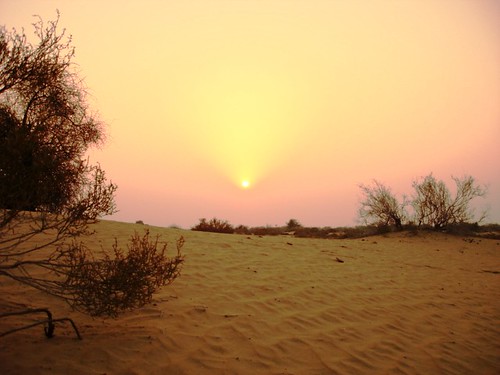 Beautiful Pakistan
Beautiful Pakistan Beautiful Pakistan
Beautiful Pakistan Beautiful Pakistan
Beautiful Pakistan Beautiful Pakistan
Beautiful Pakistan Beautiful Pakistan
Beautiful Pakistan Beautiful Pakistan
Beautiful Pakistan Beautiful Pakistan
Beautiful Pakistan Beautiful Pakistan
Beautiful Pakistan Beautiful Pakistan
Beautiful Pakistan Beautiful Pakistan
Beautiful Pakistan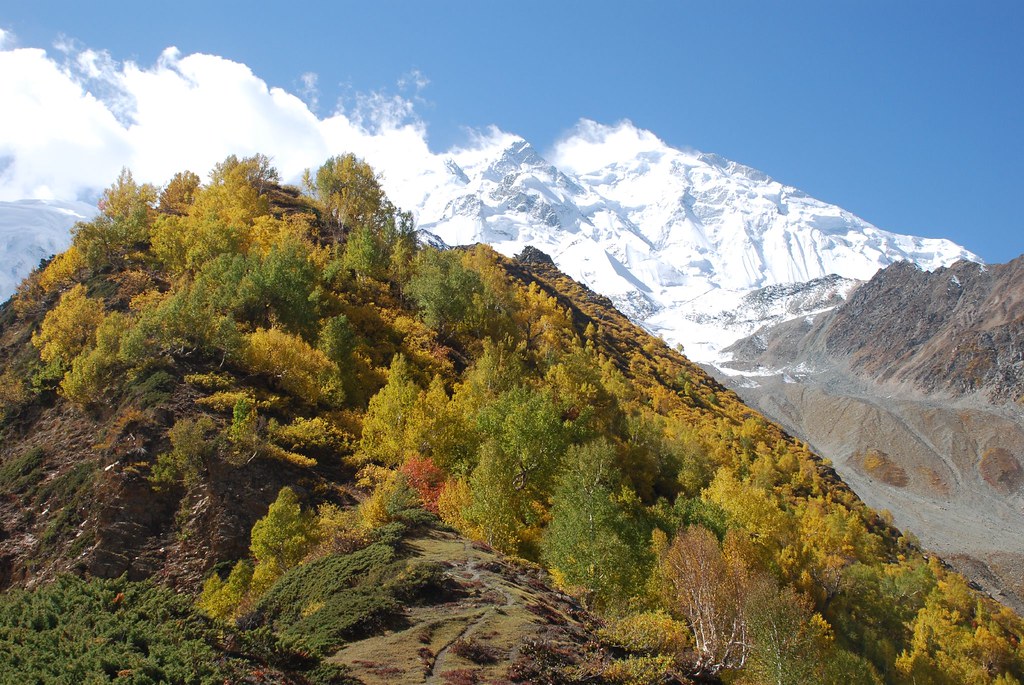 Beautiful Pakistan
Beautiful Pakistan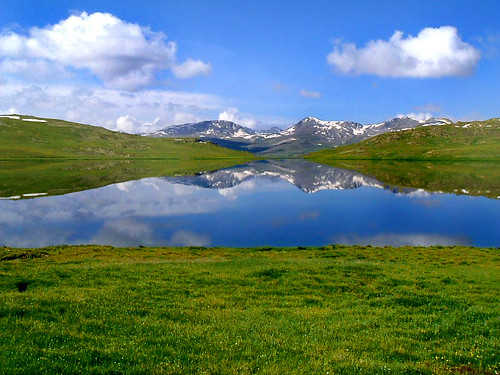 Beautiful Pakistan
Beautiful Pakistan Beautiful Pakistan
Beautiful Pakistan Beautiful Pakistan
Beautiful Pakistan Beautiful Pakistan
Beautiful Pakistan Beautiful Pakistan
Beautiful Pakistan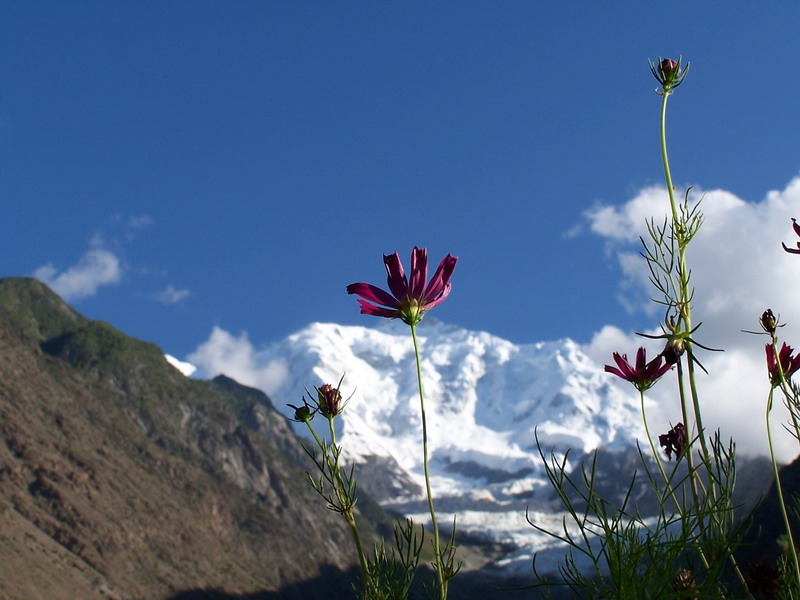 Beautiful Pakistan
Beautiful Pakistan Beautiful Pakistan
Beautiful Pakistan Beautiful Pakistan
Beautiful Pakistan Beautiful Pakistan
Beautiful Pakistan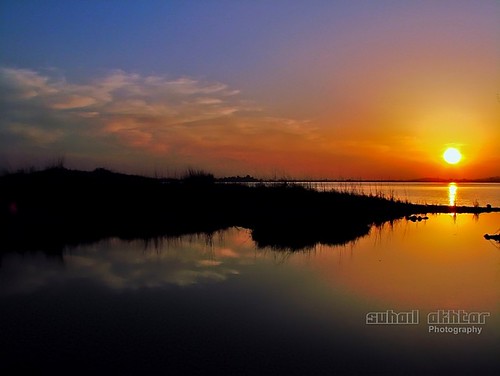 Beautiful Pakistan
Beautiful Pakistan Beautiful Pakistan
Beautiful Pakistan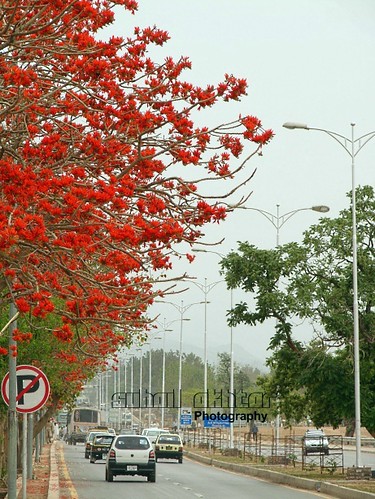 Beautiful Pakistan
Beautiful Pakistan Beautiful Pakistan
Beautiful Pakistan


